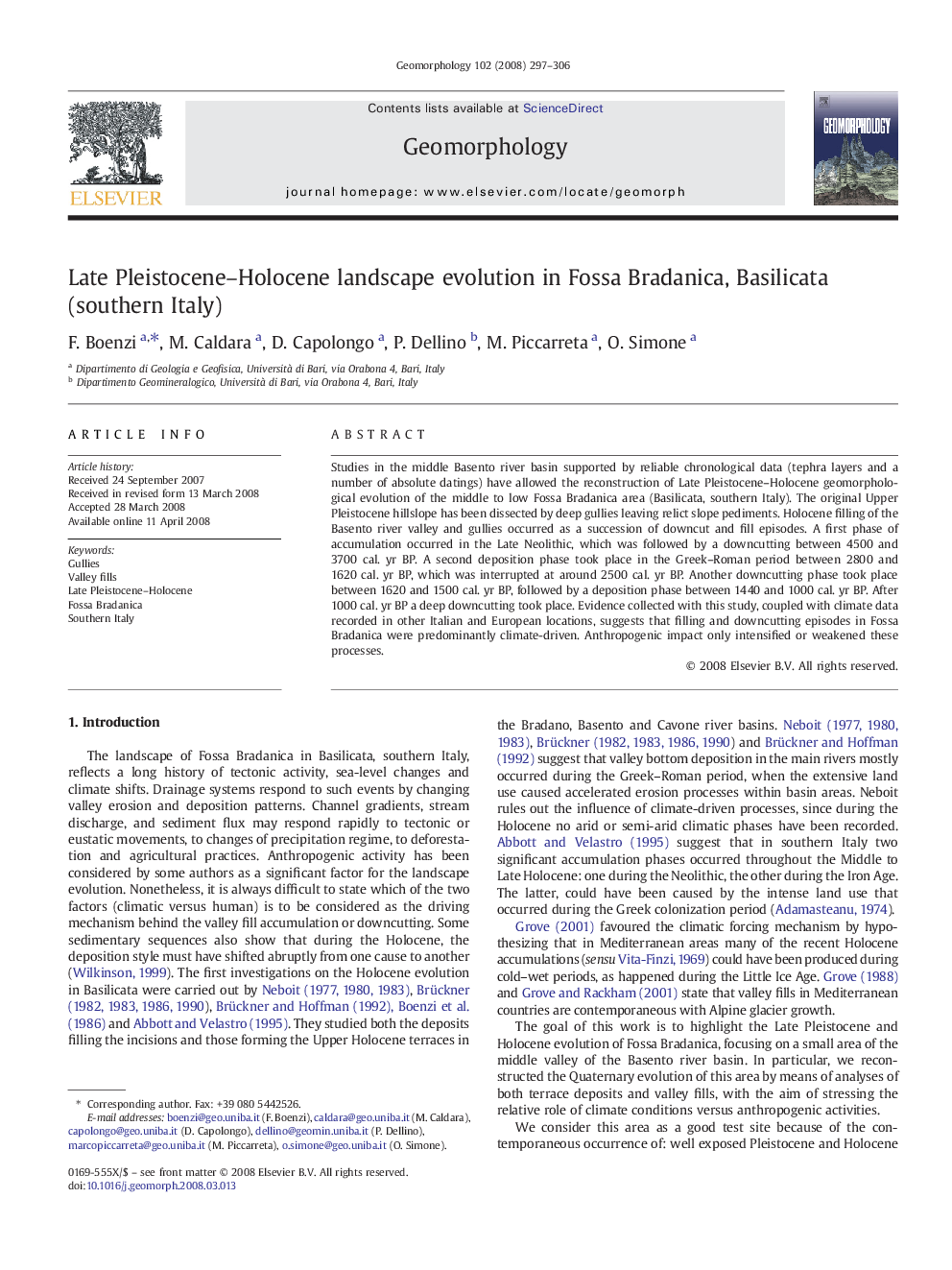| Article ID | Journal | Published Year | Pages | File Type |
|---|---|---|---|---|
| 4686481 | Geomorphology | 2008 | 10 Pages |
Studies in the middle Basento river basin supported by reliable chronological data (tephra layers and a number of absolute datings) have allowed the reconstruction of Late Pleistocene–Holocene geomorphological evolution of the middle to low Fossa Bradanica area (Basilicata, southern Italy). The original Upper Pleistocene hillslope has been dissected by deep gullies leaving relict slope pediments. Holocene filling of the Basento river valley and gullies occurred as a succession of downcut and fill episodes. A first phase of accumulation occurred in the Late Neolithic, which was followed by a downcutting between 4500 and 3700 cal. yr BP. A second deposition phase took place in the Greek–Roman period between 2800 and 1620 cal. yr BP, which was interrupted at around 2500 cal. yr BP. Another downcutting phase took place between 1620 and 1500 cal. yr BP, followed by a deposition phase between 1440 and 1000 cal. yr BP. After 1000 cal. yr BP a deep downcutting took place. Evidence collected with this study, coupled with climate data recorded in other Italian and European locations, suggests that filling and downcutting episodes in Fossa Bradanica were predominantly climate-driven. Anthropogenic impact only intensified or weakened these processes.
